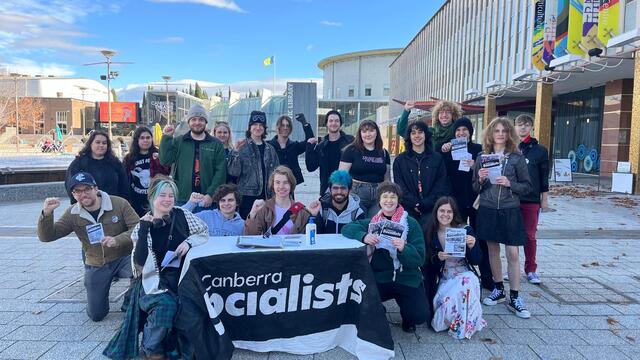Delivering the keynote address at the recent Local Government Professionals Annual Conference in Melbourne, Partner at the European Institute for Public Participation Simon Dalferth said that relationships with stakeholders are the core business of councils and that public participation is a way to reinvigorate democracy.
He referred to the word of the year in Germany – ‘Wutbürger’ – which translates to outraged citizen.
“This transmits the message that citizens want to be involved and consulted on decisions that affect them,” he said.
“Citizens have turned into creators, producers and sponsors of government, and they are no longer passively affected by Government decisions. Citizens are now involved in social movements and political processes.”
He said there are three distinct links between public participation and democracy – it educates citizens; helps to better reflect their preferences and makes use of local knowledge; and increases accountability and trust in democratic processes.
In Europe, the use of public participation methods has grown rapidly over the last ten to 15 years.
Simon Dalferth illustrated several case studies where councils and governments are using online tools and forums to promote public participation.
One example was Lichtenberg, Berlin, where the local council has been running a participatory budget for five years, meaning citizens are actively involved in the budget process and allocation.
Located in eastern Berlin, Berlin-Lichtenberg Borough comprises 251,000 residents and 13 districts.
The participatory budget project allows citizens to discuss and express their preferences with regards to local issues.
Each year, the Borough allocates €31 million to implement citizens’ preferences and suggestions across a number of discretionary fields, including public health, parks, libraries and youth services.
Council provides a detailed explanation on the structure of the budget, including precise sums of money and areas in which these sums are to be invested. There are several options for citizen participation.
First, an online platform, which operates for several weeks, allows citizens to post online suggestions and comments, and at the end of the discussion period vote for the best ideas.
The online platform contains a detailed information section, moderated discussion forum, budget calculator, proposal wikis, preference polling, newsletter, editor’s interviews with politicians and so forth.
Second, Council conducts thirteen citizen assemblies – one in each of the Borough districts. At the assemblies, citizens can discuss the general budget and the budgetary implications for their specific district with representatives and public officials.
All budgetary suggestions are evaluated at the end of the meeting and each participant can cast a vote.
The top five suggestions from each district assembly and the top ten suggestions from the online discussion are then gathered into a single list – a total of up to 75 suggestions.
As the online forum and citizens’ assemblies are based on unsolicited open participation, they are not considered to be representative. As such, Council carries out a survey of 25,000 randomly selected residents (nearly 10 per cent of the borough population) to evaluate the best suggestions that were raised online and face to face.
Berlin-Lichtenberg Borough has invested considerable resources in raising awareness about the participatory budgeting project among residents.
Council staff distribute posters and leaflets, hold information stands at local festivals and events, and publicise the event in the local media.
In 2010, Council accepted 58 of the 75 proposals presented, which covered issues from playgrounds to aged care.
Simon Dalferth said the process is fully transparent and there is much information online about how the process works, how many people participate and how, demographics and so forth.
“Everyone can trace a decision from when and how it was lodged, right through to the adoption,” he said.
“The process is adapted each year as it develops, for example, new ways to submit and discuss ideas have now been included. It now also includes a larger budget.”
A similar initiative running at a national scale is the BürgerForum – a citizens’ forum in Germany that allows citizens to develop a position on a selected issue. Two have already been held, with a third now in operation.
In 2009, the issue was the future of Europe. Hundreds of people were randomly selected to come to Berlin and identify issues they wanted to transfer to decision makers.
The issues were then posted online and participants of the BürgerForum collaboratively developed them as papers to be presented to the national Parliament, with the wider community then invited to comment.
The initial downfall was that its link to discussion was under developed and politicians and media didn’t take up the ideas or discuss them.
The current round has been adapted to ensure that the link to the decision making process is clearer, internally and externally, and the role of all involved – politicians, experts and citizens – is clearer.
In 2011, the online dialogue is focused on the growing social diversity and the multicultural society.
As in the previous two rounds, the political programs will be discussed and worked out on a specially designed online platform, but instead of a few hundred people, the BürgerForum 2011 will unite 10,000 German citizens.
To open the dialogue for this considerably larger group of participants, the discussion process, as well as the website has to undergo a few changes.
First, the participants are debating in 25 local forums, whereby each region will work on their own citizens’ agenda.
Afterwards, the local forums will be combined to one nationwide forum, where the participants will approve a common citizens’ agenda that will be presented to the Federal Preisdent in May.
Simon Dalferth said that to be successful, public participation initiatives like these must be ongoing – not just once of processes, so that politicians know they are serious.
“There also needs to be a level of accountability,” he said. “Citizens need to see where their proposals are being taken up and where they have been rejected and they should be able to see the reasons and how justifiable they are.
“Public participation can reinvigorate and foster democracy, but its potential is not always realised.
“The best way to realise is by systematically reviewing its effects. Projects don’t always achieve the goals they proclaim, but failure without learning is not possible – it allows us to adapt and improve.”
For further information on Simon Dalferth and his research visit www.participationinstitute.org








